Breast Augmentation in Tokyo
Search and Compare the Best Clinics and Doctors at the Lowest Prices for Breast Augmentation in Tokyo

Find the best clinics for Breast Augmentation in Tokyo
No clinics available
Breast Augmentation in Japan
Price: $ 5,323
Breast Augmentation in Higashicho
Price: $ 5,323
Hungary offers the best prices Worldwide
Price: $ 208
Compare Before & After Photos of _procedure_photos.phpBreast Augmentation
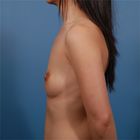

Full-side view
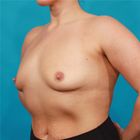

Half-side view
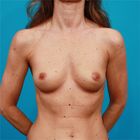

Front view
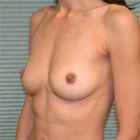

Half-side view
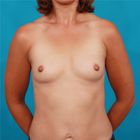

Front view
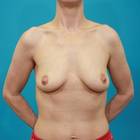

Front view
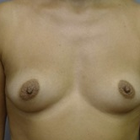
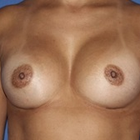
Front view


Front view
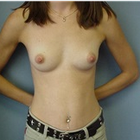

Front view

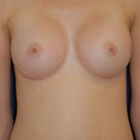
Front view
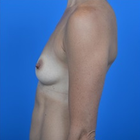
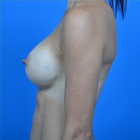
Full-side view
WHY US?
At Medijump, we're making medical easy. You can search, compare, discuss, and book your medical all in one place. We open the door to the best medical providers worldwide, saving you time and energy along the way, and it's all for FREE, no hidden fees, and no price markups guaranteed. So what are you waiting for?

Free

Best Price

Widest Selection

Risk-Free
What you need to know about Breast Augmentation in Tokyo
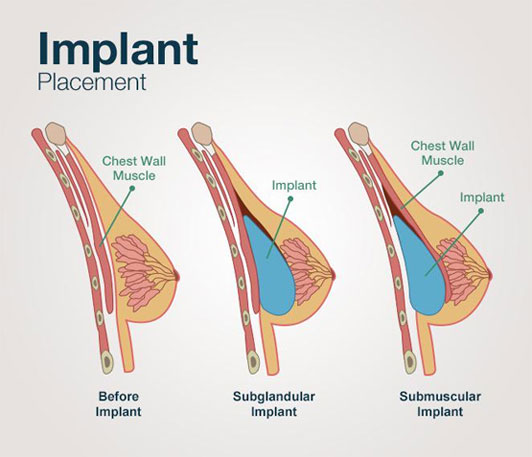
Breast augmentation, also known as a Boob Job or Breast Enlargement, is a surgical procedure aimed at increasing breast size, enhancing shape, or improving symmetry. In Tokyo, this procedure is carried out by board-certified plastic surgeons in accredited medical facilities, ensuring both safety and quality.
What is the cost of Breast Augmentation in Tokyo?
Prices in Tokyo are competitive, often offering savings without compromising on quality, especially when compared to costs in the US or Europe. However, factors such as surgeon’s fees, facility costs, and the type of implants affect the total cost.
What does a Breast Augmentation Procedure Involve?
The surgery involves placing breast implants under the breast tissue or chest muscles. Choices between saline or silicone implants can be made based on the desired feel and appearance. This is something your surgeon will discuss with you prior to even travelling.
How Long Should I Stay in Tokyo for a Breast Augmentation Procedure?
The length of stay in Tokyo for a Breast Augmentation is subject to various factors, such as your overall health, the specific nature of the procedure, and your individual recovery rate. Generally, Breast Augmentation surgery is an outpatient process, meaning you may be able to return home on the same day. However, a stay of up to two days might be necessary if your procedure is more intricate.
Although the hospital stay is relatively brief, it is advisable to remain in Tokyo for at least one-week post-procedure. This timeframe allows for initial recovery and a follow-up appointment with the surgeon. Moreover, in the event of any complications, prompt medical assistance will be accessible. Thorough knowledge of the recovery process and its duration is crucial for proper preparation and managing stress during treatment.
What's the Recovery Time for Breast Augmentation Procedures in Tokyo?
Post-surgery, a recovery period of one to two weeks is generally required, with follow-up visits to the surgeon. It's crucial to follow all post-op instructions for optimal healing.
Experiencing swelling and discomfort following the operation is normal, both of which should gradually alleviate with time. You will be required to wear a compression garment, take prescribed medications, and maintain a healthy lifestyle for an effective recovery.
What sort of Aftercare is Required for Breast Augmentation Procedures in Tokyo?
Post-operative care is critical for the success of a Breast Augmentation. The initial recovery phase usually includes prescribed medications to alleviate pain and avert infection. Individuals can normally resume everyday activities within a few weeks, depending on their healing pace and bodily responses. However, it is advisable to refrain from vigorous activities for a minimum of six weeks post-procedure.
What's the Success Rate of Breast Augmentation Procedures in Tokyo?
In Tokyo, Breast Augmentation boasts a relatively high success rate, which contributes to its immense popularity among individuals seeking improvements in their physical appearance. Numerous patients have reported satisfaction and enhanced confidence after undergoing the procedure, making it a widely favoured cosmetic surgery.
Are there Alternatives to Breast Augmentation Procedures in Tokyo?
In Tokyo, there are several alternatives to the Breast Augmentation. If you're considering breast augmentation strictly for cosmetic reasons and prefer non-surgical options, various suitable methods are available. Alternatives include fat grafting, hormonal therapy, and natural remedies. Fat grafting, also known as fat transfer, involves removing fat from different body parts and injecting it into your breasts. This approach is regarded as safer because it employs the body's tissue, minimizing complications.
What Should You Expect Before and After the Procedure?
Prior to the procedure, your surgeon will discuss your expectations and the anticipated outcomes of your Breast Augmentation. The preoperative consultation comprises an in-depth conversation about your medical history, a physical examination, and an outline of the procedure and postoperative care. Open and candid communication with your healthcare provider is crucial at this stage to ensure the treatment matches your objectives.
Post-procedure, initial swelling and discomfort are normal and can be managed with prescribed medication. It's vital to adhere to your surgeon's post-operative guidelines, which include caring for surgical incisions, taking prescribed medications, and attending follow-up appointments. As swelling subsides and incision lines fade gradually, your enhanced breast profile will become apparent.
Keep in mind that the decision to pursue a Breast Augmentation is deeply personal and should not be made hastily. Allocate time to consider the advantages and drawbacks, and ensure you are well-informed.
What are the Risks and Complications of Breast Augmentation Procedures in Tokyo?
As is the case with any surgical intervention, Breast Augmentation comes with its own set of risks and potential complications that need to be considered. These may include infections, bleeding, alterations in nipple or breast sensations, implant leakage or rupture, development of scar tissue, and unsatisfactory outcomes that could necessitate further surgeries.
Some individuals may also encounter complications tied to anesthesia, such as respiratory problems and reactions to medication. The psychological ramifications should not be overlooked, considering surgical procedures can impact mental well-being. An extensive conversation with your healthcare provider about these potential risks remains a key component in making an informed choice.
How to Prepare for Breast Augmentation in Tokyo?
Thorough preparation plays a significant role in the success of your Breast Augmentation. Before the surgery, you must have detailed conversations with your surgeon about your medical background, allergies, current medications, and lifestyle habits such as smoking or alcohol consumption. You may need to cease certain medications and habits, including smoking, weeks before the procedure, as they can influence the healing process.
Practical preparations like organizing for someone to be with you on the day of the surgery, scheduling sufficient time off work for recovery, and establishing a comfortable space at home for recuperation can contribute to a smoother post-operative phase. Your surgeon's team will also advise you on pre-operative fasting and hygiene guidelines.
What are some Common Misconceptions about Breast Augmentation?
Despite its widespread popularity, numerous misconceptions surround the Breast Augmentation. One such misconception asserts that breast implants are permanent. In actuality, breast implants may require replacement after 10-15 years, with the specific timeframe depending on individual health and lifestyle factors. Another false assumption is that breast augmentation solely serves vanity purposes. In reality, many patients undergo this procedure following mastectomy or as part of gender-affirming surgery.
A further common myth suggests that breast augmentation hinders breastfeeding. While a few instances might affect breastfeeding, the majority of individuals with breast implants can successfully breastfeed.
Whilst the information presented here has been accurately sourced and verified by a medical professional for its accuracy, it is still advised to consult with your doctor before pursuing a medical treatment at one of the listed medical providers
No Time?
Tell us what you're looking for and we'll reachout to the top clinics all at once
Enquire Now

Popular Procedures in Tokyo
Prices Start From $834

Prices Start From $500

Prices Start From $93

Prices Start From $85

Prices Start From $477

Prices Start From $931

Recommended Medical Centers in Tokyo for procedures similar to Breast Augmentation

- Interpreter services
- Translation service
- Religious facilities
- Medical records transfer
- Medical travel insurance
- Health insurance coordination
- TV in the room
- Safe in the room
- Phone in the room
- Private rooms for patients available

- Interpreter services
- Translation service
- Religious facilities
- Medical records transfer
- Medical travel insurance
- Health insurance coordination
- TV in the room
- Safe in the room
- Phone in the room
- Private rooms for patients available

- Interpreter services
- Translation service
- Religious facilities
- Medical records transfer
- Medical travel insurance
- Health insurance coordination
- TV in the room
- Safe in the room
- Phone in the room
- Private rooms for patients available

- Interpreter services
- Translation service
- Religious facilities
- Medical records transfer
- Medical travel insurance
- Health insurance coordination
- TV in the room
- Safe in the room
- Phone in the room
- Private rooms for patients available

- Interpreter services
- Translation service
- Religious facilities
- Medical records transfer
- Medical travel insurance
- Health insurance coordination
- TV in the room
- Safe in the room
- Phone in the room
- Private rooms for patients available

- Interpreter services
- Translation service
- Religious facilities
- Medical records transfer
- Medical travel insurance
- Health insurance coordination
- TV in the room
- Safe in the room
- Phone in the room
- Private rooms for patients available

- Interpreter services
- Translation service
- Religious facilities
- Medical records transfer
- Medical travel insurance
- Health insurance coordination
- TV in the room
- Safe in the room
- Phone in the room
- Private rooms for patients available

- Interpreter services
- Translation service
- Religious facilities
- Medical records transfer
- Medical travel insurance
- Health insurance coordination
- TV in the room
- Safe in the room
- Phone in the room
- Private rooms for patients available
Breast Augmentation in and around Tokyo
About Tokyo
Tokyo is Japan’s capital. It is one of the 47 prefectures of the country. There are over 13.9 million people estimated to live there. The capital is a giant metropolis that offers tourists the chance to indulge in the traditional Japanese culture, eat in one of its delicious restaurants, or learn more about modern life. One of the most popular sights in Tokyo is the cherry blossoms that fill the streets and parks with pink petals in Spring. The soft pink petals are an icon of the country.
Among the 30 million people who traveled to Japan in 2018 are medical tourists. With a vast range of high-quality medical services and facilities, Tokyo has a large contribution to the country’s growing medical tourism. it has numerous public and private hospitals that offer outstanding healthcare. These hospitals are equipped with cutting-edge medical technology and highly qualified doctors. Many doctors and medical professionals speak fluent English.
As Japan was ranked the highest in five-year survival rates of lung cancer and esophagus cancer patients from 2010 to 2014, the most sought-after medical procedure is Tokyo oncology treatments. There are many medical facilities in the area that are JCI-accredited and offers a wide range of treatments including Breast Augmentation procedures.
Popular Areas in Tokyo
Tokyo is sprawling with many extraordinary attractions and sights. It is the perfect mixture of traditional and modern. From temples, shrines, futuristic infrastructure, robot restaurants, booming nightlife, nature to anime, all coexist peacefully here.
To see a beautiful city view, climb up the Tokyo Skytree, Tokyo Metropolitan Government Building, and Tokyo Tower. Visit Tokyo’s oldest temple, Sensoji Temple in Asakusa, and learn more about the history and traditions. The temple is surrounded by numbers of Japanese restaurants that serve authentic dishes including Sushi, Tempura, and Sukiyaki. Tourists can also try a variety of traditional activities like wearing a Kimono dress.
Not far from Asakusa is Ueno, where one of the biggest parks in Tokyo is located. Ueno Park is the perfect place to spend a beautiful day. The park consists of a zoo, museums, historical monument, and green spaces. To try out Tokyo’s futuristic and modern side, come to the first digital art museum in the world, MORI Building DIGITAL ART MUSEUM — teamLab Borderless. Experience a unique interactive art with the latest technology and immerse in multiple digital art exhibitions.
Shopping is also one of the main attractions in Tokyo. Tourists most favorite places to shop are Ginza, Nakamise Shopping Street, as well as Takeshita Street and Omotesando in Harajuku. For anime or Disney fans, attractions such as Ghibli Museum, Fujiko F Fujio Museum, Pokemon Center, Tokyo One Piece Tower, Nakano Broadway, Akihabara, Tokyo Disneyland, and Tokyo Disney Sea are some of the best places to visit.
Weather and Climate in Tokyo
Tokyo is a year-round destination because it has temperate weather with four distinct seasons.
- Summer is hot and humid with an average temperature of 21 to 32 °C. Sometimes it can get as high as 40 °C. this season starts in June and ends in August. June sees a lot of rainfall while August is the start of typhoon season.
- Autumn lasts from September to November. The typhoon season peaks in November. The weather during this season is mild with less humidity. It is pleasantly warm in October, making it one of the best times to travel in Tokyo.
- Winter comes in December and lasts until February. The weather is dry and sunny with an average temperature of around 2 °C to 12 °C. The temperature rarely drops below 0 °C. There is very little snow in Tokyo.
- Spring starts in March to May. The temperature increases gradually during this season, with an average of 13 °C in the afternoon and 5 °C in the morning and evening. The sky is mostly clear during this season and it is also one of the best times to visit Japan because of the cherry blossoms.
Getting Around in Tokyo
Located around 60km east of central Tokyo, Narita International Airport is the main international gateway to Tokyo. The airport serves both domestic and international flights to almost every major city in the world. Budget airlines such as Jetstar Japan, Peach, and Eastar Jet operates flights from this airport.
Rail, bus, taxi, or car rental are available for tourists to reach the city center from Narita Airport. There are several train types to choose from. The Main Line (regular commuter train) in Keisei Line is the most affordable one, it costs around ¥1,190 to ¥1,230 ($10 to $11.3) and it connects with the Toei Asakusa Subway Line and the Yamanote Line. For faster travel, choose the Skyliner train that takes only 36 minutes to Nippori. This train costs around ¥2,470 ($22.7). There is another train known as the Sky Access Express train that offers better access to Tokyo. A trip to Asakusa takes about 58 minutes and costs around ¥1,290 ($11.9).
A taxi might not be the best option since it’s very expensive, it usually costs over ¥20,000 ($184) from Narita Airport to Tokyo. The more affordable option is the shared minibus which cost ¥6,180 ($57) per person. Buses are comfortable, the Limousine Bus costs around ¥2,880 ($26.5) and the Tokyo Shuttle costs around ¥900 ($8) to ¥1,000 ($9).
Tokyo is served by one of the best public transport systems in the world. Trains and subways are the best way to get around the city. It is the cheapest and fastest mode of transportation. Taxis are easily available and can be hailed on the street except in areas like Ginza, where taxis are only allowed to stop in taxi stands. The base fare is ¥430 ($4) for the first 1.5 km and ¥80 ($0.7) for every 237 meters.
Tourist Visas in Tokyo
Japan allows citizens of 68 countries and territories to stay in the country for up to 90 days. Citizens of Indonesia, Brunei, and Thailand are granted a 15-day visa-free trip. The country has a visa for a medical stay that grants long-term stays to medical tourists and approval for visa holders to travel back and forth between their home countries and Japan. Foreign visitors who visit Japan on tourist visas can also receive medical services, except for long-term therapies and surgeries that require more than three months.
Additional Information
- Local Currency: The official currency is the Japanese Yen (¥). There is around ¥111 per $1.
- Money & Payments: ATMs are widely available and can be found in post offices or convenient stores (especially 7-Eleven). Credit cards are accepted in some hotels, restaurants, and shops but it is advisable to always bring cash. Tipping is optional.
- Local Language: Japanese is the official language. Most people speak limited English but many restaurant menus and signs are written in both Japanese and English.
- Local Culture and Religion: The main religion is Shintoism and Buddhism. There is a small group of Christians in the city.
- Public Holidays: There are sixteen major public holidays in Japan. The city hosts annual festivals including Fuji Matsuri, Hinode Matsuri, and Tenno Matsuri.
Popular Searches
- Plastic Surgery in Thailand
- Dental Implants in Thailand
- Hair Transplant in Thailand
- Breast Augmentation Thailand
- Gastric Sleeve in Thailand
- Gender Reassignment Surgery in Thailand
- Laser Hair Removal in Bangkok
- Botox in Bangkok
- Dermatology in Bangkok
- Breast Augmentation in Bangkok
- Coolsculpting in Bangkok
- Veneers in Turkey
- Hair Transplant in Turkey
- Rhinoplasty in Turkey
- Stem Cell Therapy in Mexico
- Rhinoplasty in Mexico
- Liposuction in Mexico
- Coolsculpting in Tijuana
- Rhinoplasty in Korea
- Scar Removal in Korea
- Gastric Sleeve in Turkey
- Bone Marrow Transplant in India
- Invisalign in Malaysia
- Plastic Surgery in the Dominican Republic
- Tummy Tuck in the Dominican Republic
- Plastic and Cosmetic Surgery in Poland
- Rhinoplasty in Poland
- Hair Implant in Poland
- Dental Implants in Poland
- IVF in Turkey
